On October 6, Dr. Tran Huu Thanh Tung (Department of Endocrinology - Diabetes, Tam Anh General Hospital, Ho Chi Minh City) said that the patient's blood test results showed that the concentration of prolactin hormone secreted by the anterior lobe of the pituitary gland was 1,035 ng/ml, 34 times higher than normal.
The doctor determined that this was the reason why the patient was producing milk even though she was postmenopausal. The doctors continued to do an MRI (magnetic resonance imaging) and discovered a large tumor in the pituitary gland measuring 45x37x47 mm. The tumor invaded the optic chiasm, making the patient unable to see anything around him. The tumor grew larger and larger, pressing on the brain, causing severe headaches and weakness.
The patient had the pituitary tumor removed by the team of doctors from the Neurosurgery Department using endoscopic surgery through the nose. The surgery lasted nearly 2 hours, the pituitary tumor was completely removed without causing damage to surrounding areas such as blood vessels, nerves, brain parenchyma, etc.

Doctor examines patient during treatment
TA
Five days after the surgery, the patient no longer had headaches, no longer had milk in her breasts, and was able to sit up and walk around the room on her own. However, her visual field, which had been severely damaged many years earlier, could not recover.
Taking the medical history, the patient said that 3 years ago, he discovered that his shirt was wet due to milk secretion and had a headache. He thought it was a minor illness so he did not go to the doctor. In August 2022, he started to see everything blurry and went to many places for treatment but there was no improvement. After that, his family took him to Tam Anh General Hospital for examination and treatment.
After treatment, Ms. K. said that although her eyesight did not return, she was no longer bedridden like before, so she felt somewhat comforted. She also expressed regret that if she had received treatment sooner, she probably would not have gone blind.
About 60% of cases of visual impairment are due to large pituitary tumors.
Dr. Tung said that there are many different types of pituitary tumors according to cell groups, most of which are benign. The disease can occur at any age but is common in people aged 30-40. Pituitary tumors account for 10%-15% of all tumors developing in the skull. About 77/100,000 people have pituitary tumors. Pituitary tumors are divided into two main types: non-hormone-secreting pituitary tumors and hormone-secreting pituitary tumors.
Although benign pituitary tumors do not invade other organs, they can grow large and put pressure on nearby structures, causing symptoms such as nausea, decreased vision, blurred vision, and double vision. About 40%-60% of people with large pituitary tumors have impaired vision. Patients have headaches due to tumor pressure affecting nearby tissues. Patients may also have conditions of increased hormone secretion or decreased hormone secretion due to pituitary insufficiency, which will lead to symptoms such as: excessive growth or slow growth in height in children, male and female infertility, irregular menstruation, unexplained weight gain or loss, depression, anxiety, etc.
Pituitary tumors usually have 3 treatment methods: medication, radiotherapy, surgery. In which, surgery is indicated when the tumor compresses the optic chiasm, the optic nerve is compressed by the tumor affecting vision, the patient has facial pain, headache, body weakness, pituitary hormone levels increase or decrease too much...
Doctor Tung recommends that when noticing unusual symptoms, patients should go for early treatment. To prevent pituitary tumors, people should proactively go for regular general health check-ups at least once a year.
Source: https://thanhnien.vn/tuong-benh-nhe-khong-di-kham-nguoi-phu-nu-bi-mu-hai-mat-do-u-tuyen-yen-185231006092232011.htm




![[Photo] Fall Fair 2025 - An attractive experience](https://vphoto.vietnam.vn/thumb/1200x675/vietnam/resource/IMAGE/2025/10/30/1761791564603_1761738410688-jpg.webp)
![[Photo] Standing member of the Secretariat Tran Cam Tu visits and encourages people in the flooded areas of Da Nang](https://vphoto.vietnam.vn/thumb/1200x675/vietnam/resource/IMAGE/2025/10/30/1761808671991_bt4-jpg.webp)




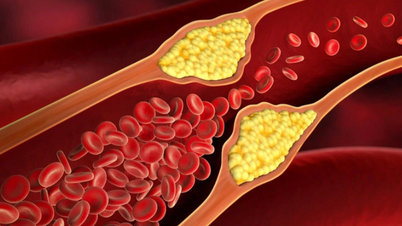








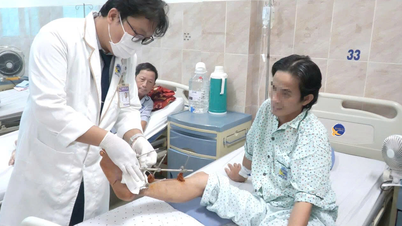



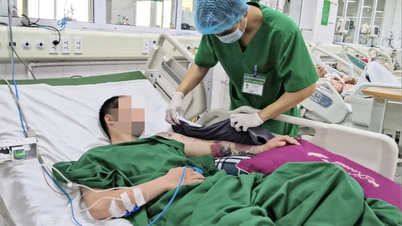
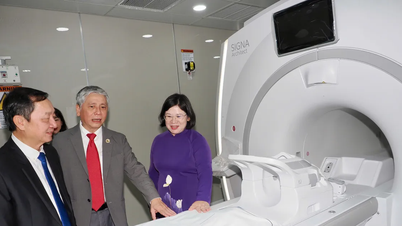








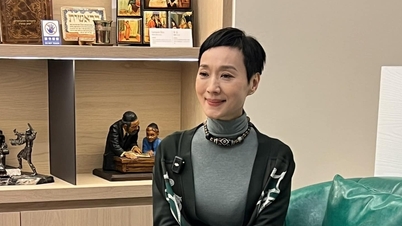


![[Photo] New-era Party members in the "Green Industrial Park"](https://vphoto.vietnam.vn/thumb/1200x675/vietnam/resource/IMAGE/2025/10/30/1761789456888_1-dsc-5556-jpg.webp)












































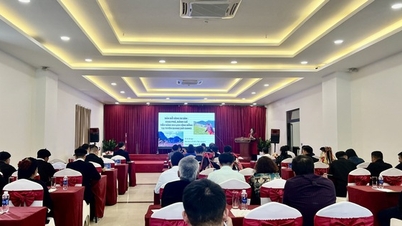
























Comment (0)